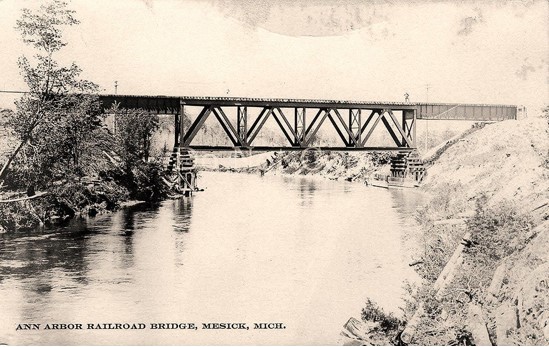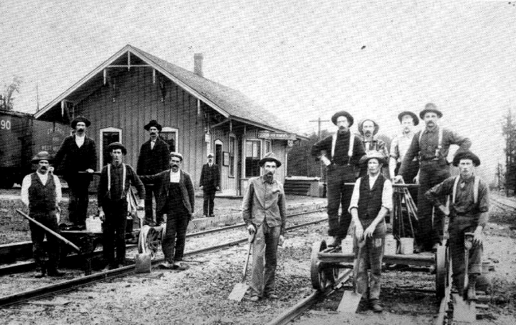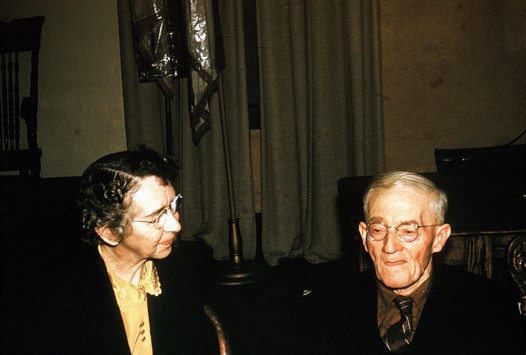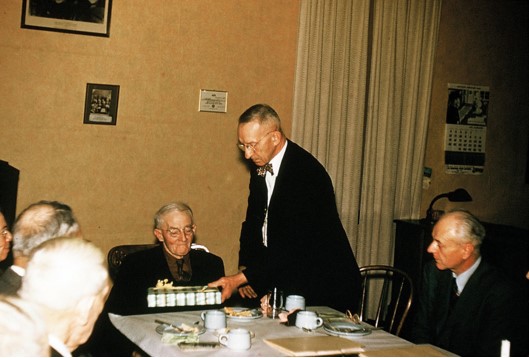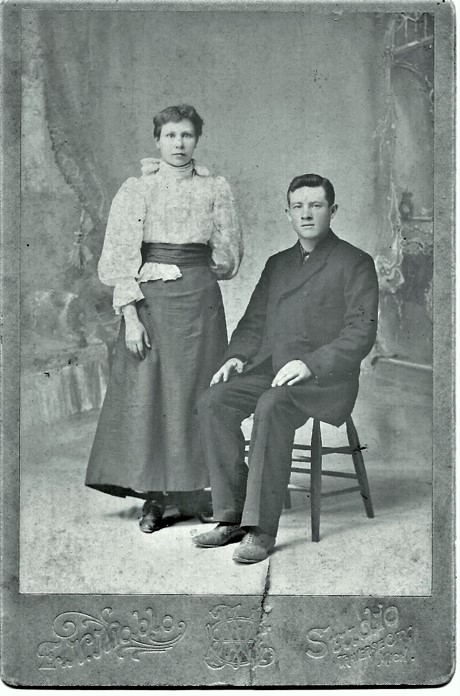Howard and Eleanor Mesick’s son, Edward, in his later life, recalled the story of how Mesick come about and why the village of Sherman declined:
“The Village of Mesick came into existence as the result of some miscalculations on the part of a Sherman merchant who thought himself to be quite astute. (Sherman was a town located about two miles north and one-quarter mile east of Mesick.)
‘The merchant, quite good at mathematical figuring, was aware of the fact that the Ann Arbor had land holdings in the area and would someday build a railroad in the area.
‘Accordingly, he persuaded a group of Sherman businessmen to bring pressure to bear on four townships in the western part of the county to use their influence in getting the railroad constructed. His scheme didn’t cost him a cent.
‘His eyes were already registering dollar signs as he imagined the profits that would accrue from such a bold venture, which required no risk capital on his part, then his figuring blew up in his face.
‘The railroad brought in construction gangs and went to work with a will. The tracks came up north to the left bank of the river and then moved along the bank. The Sherman merchant’s dollar signs grew bigger in his mind.
‘Then when the railroad reached the present site of Mesick, it took a hairpin turn from heading northeast to going west and crossed the river about a mile or more directly overland from Sherman.
‘The merchant obviously hadn’t bothered to investigate much beyond paper as to where the best place for the tracks to cross the river would be. His dollar signs told him that Sherman was surely going to be on the mainline and would grow into a thriving metropolis.
‘Instead, it was left high and dry.
‘Mesick still wasn’t even an idea in anyone’s mind though, until the railroad began operating and Sherman residents began beating a track across the Mesick fields, to get to the railroad. It wasn’t doing Howard Mesick’s crops any good, but what was he to do?
‘George L. Wells, Ann Arbor railroad surveyor, spoke to Mr. Mesick one day and suggested that he turn some of this traffic across his farm into profit by platting a village. There would be stores and houses and schools and so on, pretty soon maybe Sherman would fold up because of Mesick’s commanding position on the railroad.
‘Mr. Mesick agreed that it might be a pretty good idea, but the money for making such a survey was not easily come by. Wells offered to do the job in return for a couple of lots. The deal was made.
‘Accordingly, Wells made his survey December 23-24, 1889, and January 2, 1890. The plat of the village was accepted by the state February 25, 1890.”
Gallery
